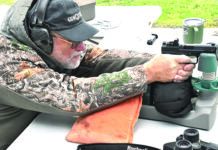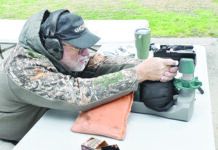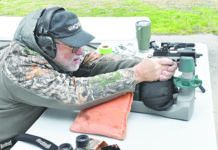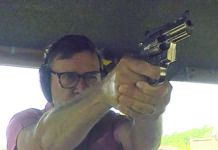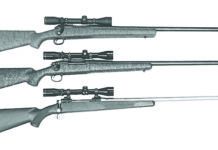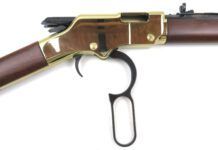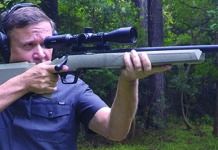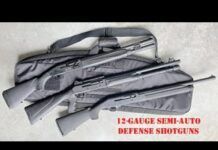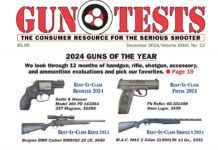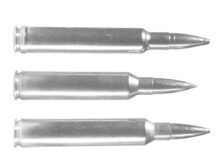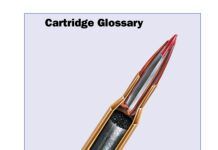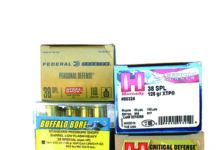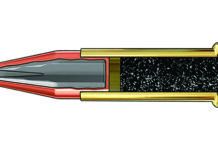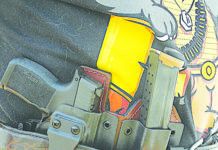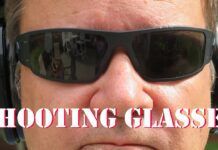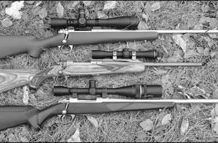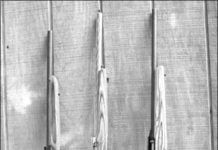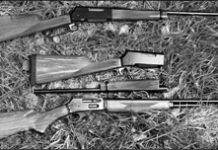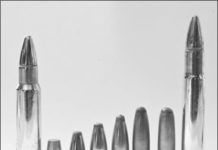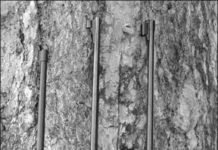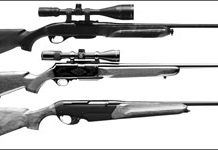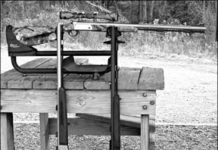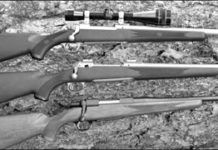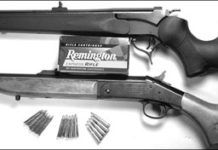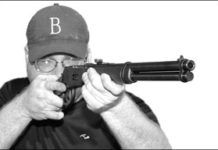.338 Federal Ri?es: Kimbers Montana Is Light, and Great
Heavy-Barreled Autoloaders: TC Benchmark Classic Rates A-
Marlins 308MX Beats the New Browning Takedown BLR Gun
All-Around .35-Calibers: We Pit Remingtons CDL Vs. the BDL
Three .375 Hunting Rifles: New Models Lose Out to Older CZ
he grand old .375 H&H Magnum has been around nearly a century, and it still holds its own among serious riflemen. Could it possibly have a challenger today? Maybe, but in truth it would take a century to find out, and we'd wager the H&H version will still be around in a hundred years. We chose to put two modern rifles against a slightly older one built on the Magnum Mauser action. We looked at a rifle you can purchase today in the classic old caliber; how another rifle handled the big case a decade ago, and how well a young upstart cartridge does against the original .375 Magnum Belted Rimless, as it was once known. We gathered a classic CZ 602 ZKK Magnum Mauser (about $1200) and a new Remington 798 ($970), both in the .375 H&H version, and a new Ruger Hawkeye African in .375 Ruger caliber ($1095).
We tested the two .375 H&H's with Hornady 270-grain SP InterLock and 300-grain FMJs, with Remington Premier Safari Grade loaded with premium 300-grain Swift A-Frame bullets, and with a handload featuring 300-grain Nosler Partitions. We shot the Ruger with only two types of ammo, both by Hornady. These were the 270-grain SP-RP and 300-grain RNs. Here's what we found.
Semiauto .30-06 Hunting Rifes: 750 Woodsmaster Wins the Day
Bolt-Action .223 Alternatives: Savage 16FSS Earns an A-Plus
In-Line Ri?es: Knight Revolution Rates A+ as .50-Caliber Choice
Medium-Bore Hunting Ri?es: Savages 116FHSS Gets an A-
Pricey .22 Plinkers: We Favor Brownings Buck Mark Sporter
Iron-Sighted Single Shots: Buy NEFs Handi-Rifle in .22 Hornet
Anyone who wants a rifle with more power than a .22 LR but doesn't want all the noise of a .223 can always choose the .22 Hornet. The idea of a handy centerfire rifle for "survival," or as a fun gun for the dedicated woods loafer or weekend plinker can be well met by a rifle chambered for this old cartridge. When the Hornet first came out in the early 1930s it was a big hit, and remained so for many years. Today it has a spotty popularity record, generally because many shooters think more is always better, and want a .223. But the Hornet is a lot quieter, and even cheaper than the .223 for the reloader.
Although the Hornet survives today, guns and ammo may not always be easy to find. A recent casual survey of gun shops in a small deer- and elk-hunting community led to exactly one shop out of three having any .22 Hornet ammunition on hand, and that store had but one box.
The tiny, rimmed cartridge screams for reloading, not only because ammo might be hard to find. A pound of powder is enough for a thousand reloads. The bullets, primers and a pound of powder will cost about $100-150 total, or about 10 to 15 cents a shot. We just paid $32 for a box of 50 factory loads. That's 64 cents each. Ouch! So if you own a Hornet, be sure to save your brass. Also, reloading can make the Hornet more versatile than the .22 WMR or the new .17 rimfire, and it delivers a lot more power than either of those.
We recently tested several bolt-action Hornets and fell in love with a CZ that shot circles around its competition. At that time we though a single-shot version might be even handier, and maybe less costly. We wanted to do without a scope, if possible. We can already hear the complaints, that a rifle without a scope is little better than a handgun. But iron sights are hard to beat for lowest cost, plus all-out durability if they are good ones. Never mind that our test rifles can be scoped, they both came to us with iron sights, and we evaluated them that way.
We acquired a New England Arms Handi-Rifle with hardwood stock (SB2-224, about $250 street price) and a Thompson/Center Encore with synthetic stock, which was the least costly version (about $450 street price). The guns had several attributes in common. The controls were few, and were extremely simple. One button or lever opened each rifle. The only safety on each was the hammer. Both had internal blocks that prevented the hammer from striking the firing pin unless the trigger were pressed. We tested them with Remington Express 45-grain PSP ammo and with two of our carefully assembled handloads, one featuring Barnes' 40-grain Varminator HP bullets (stock no. 22429) and the other with 55-grain Hornady FMJs. We experimented with 75-grain bullets, but the twist rate wouldn't stabilize them. Here is what we found.


